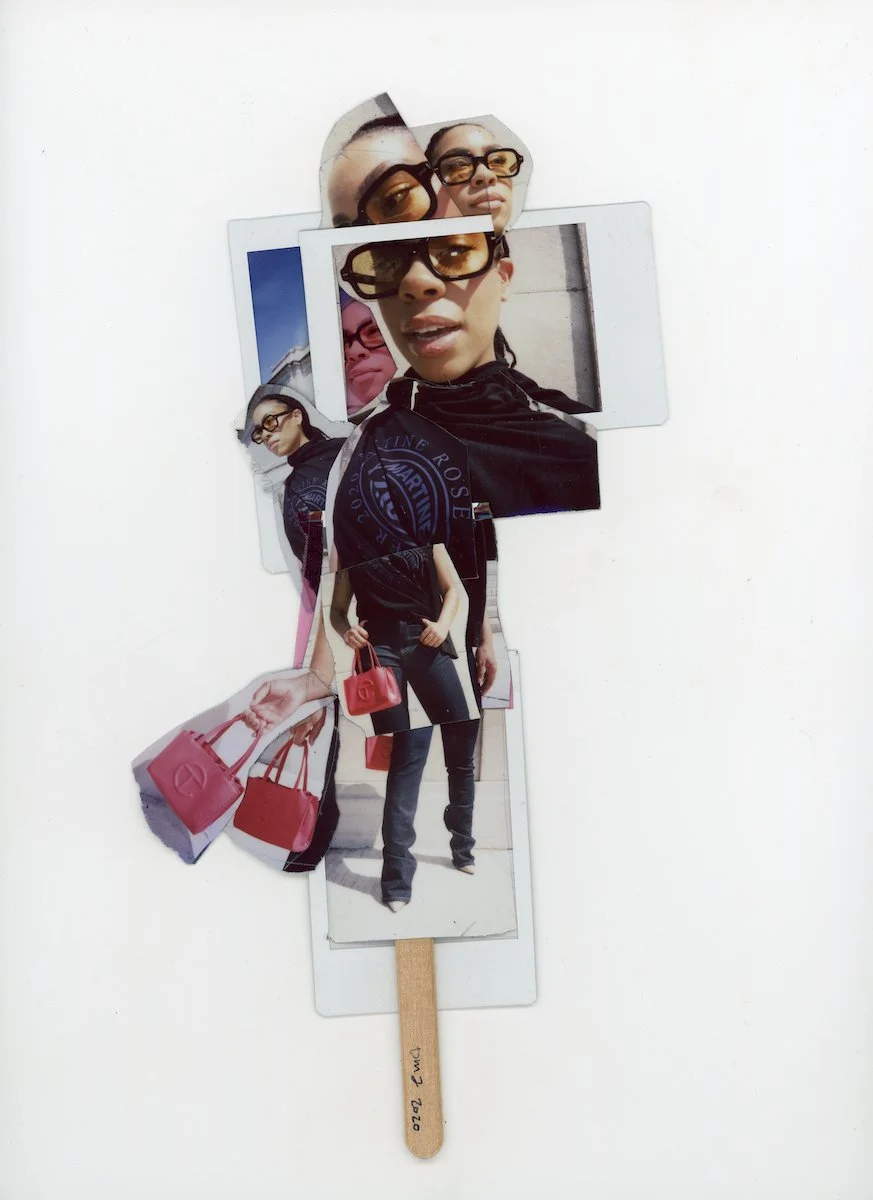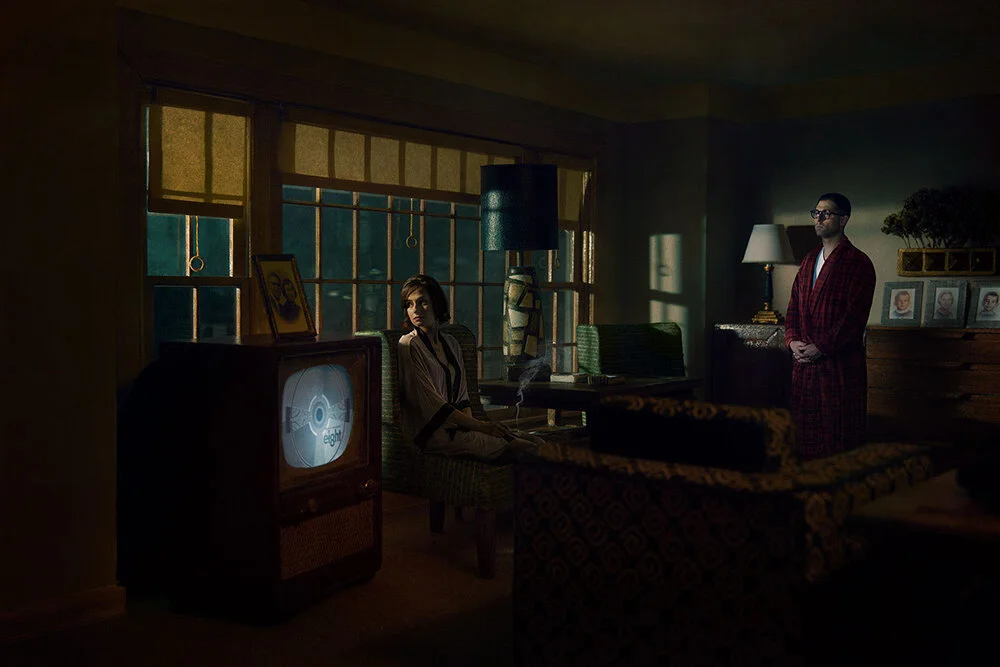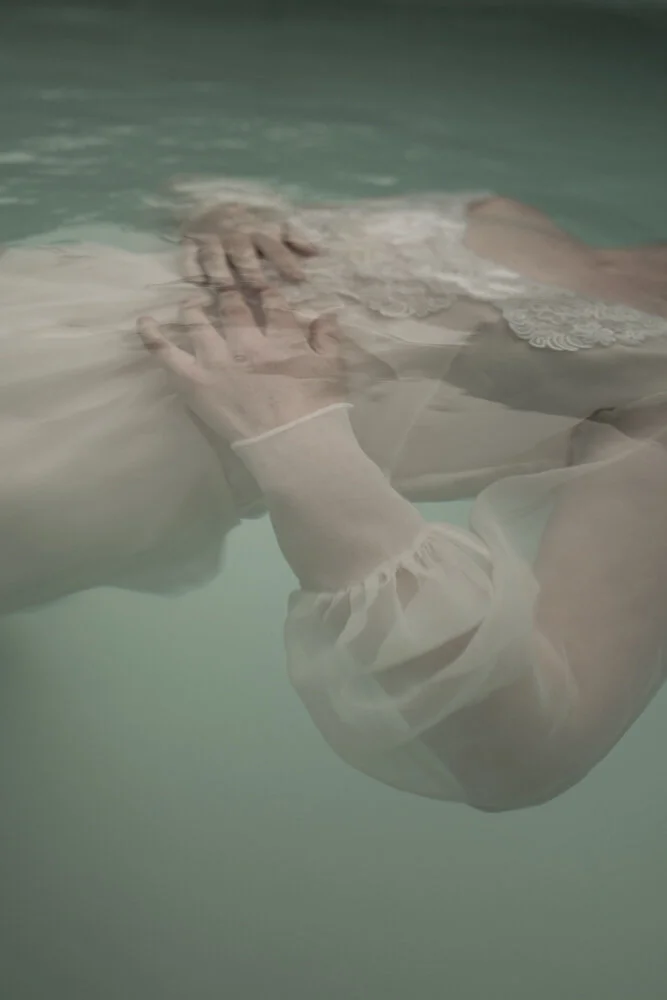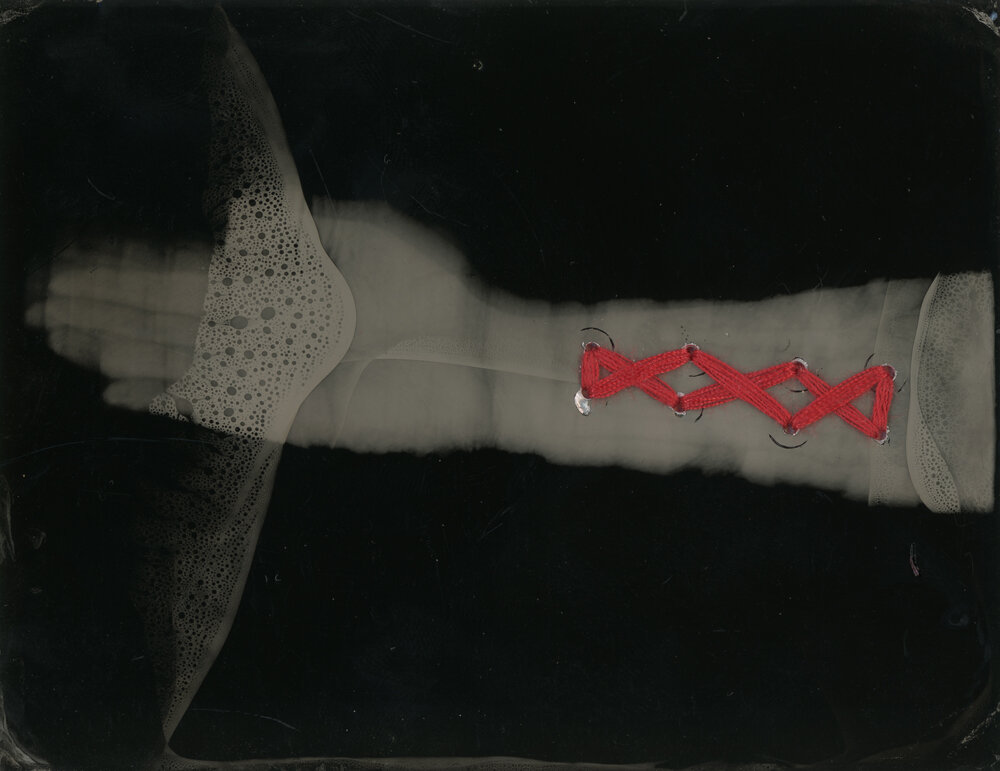Asked about Spike Waves itself, Debe told me that although David is non-verbal, he still communicates via various mannerisms. “That particular day, David refused his medicine by turning away from Lori." (It seems that's quite a conundrum for Lori, because David requires the medication.) Debe also stated, "Six months after making the photo of David, I saw the fern. It reminded me of brain activity. But wasn't until I edited this image, accenting the shape of his headless body, that I saw the matching of organic shapes of the fern, his scoliotic curve and protruding ribs."
Read MoreAsked about this image, she told me, "My project involves creating miniature portraits with instant film. I analyze the personality of each individual before photographing them. I use a pack of Fujifilm Instax Mini to photograph different elements of the person that I think best represents their personality. I may also photograph a particular style to capture them as well. After I take the photographs, I spend time piecing each photograph together into a single piece of work. Using the Instax Mini allowed the project to gain more depth. It adds physical elements that people can touch. I varied the distance for each frame to create a layered effect."
Read MoreToday, I'm focusing on process. Greg Banks does one of my most favorite things a photographer can do: combine digital work with alternative and hand processes. But he goes it one better than that. He's combining iPhone photography with iPhone app painting and drawing on the images, then printing them using traditional media in a most untraditional way.
Read MoreWhat attracted me to Wentland's portfolio and this specific image is simple: speaking as a Hawai'i resident, this image sings Hawai'i. The palm leaf and the unique quality of the light imbue the image with a sense of place, this place. His son resembles how my son looked when he was young, and like so many other children here in the islands who are hapa, or mixed race. If you know this place well, you immediately recognize this as a picture of every keikikane (boy) as well as of our Hawaiian islands. In effect, it's an environmental portrait sans environment.
Read MoreI have lost three of my five siblings via unexpected and traumatic deaths: one by drowning and two by suicide.
As a result I use my photography to help make sense of the relationships we had, what we knew about each other, and what we didn’t.
~ Lea Murphy
Read MoreWhile some of her images lean towards the style and themes of Francesca Woodman, there is a quality to Acford's work that reminds me of Kumi Oguro's. Their subject matter and outward styles are markedly different, but both similarly use the trope of ambiguity. I'm specifically referring to how both utilize indeterminate space, the hidden faces, and a heightened sense of tension or danger.
Read MoreSeaton says she aspires to show joy, but I think she did one better. She evoked joy from within me, unearthing memories that rarely bubble to the surface. She brought out my inner child and had me reliving those long summer days full of endless potential.
Read MoreWelcome to no. 40 in our series Poignant Pics where our editor, Diana Nicholette Jeon, writes about Aimee B. Mccrory's hauntingly beautiful image, The Ghost Chair.
“The image is beautiful but haunted, and it has a human presence even in the absence of people. The dress, surrounded by the swirling mist, is as forlorn as if it were an aging beauty queen. Like an elegy honors a person, it is reverent to the crumpled and torn dress.”
Read MorePart of Richard Tuschman's new series, My Childhood Reimagined, Television Test Pattern delves backward into an era before iPhones, 24-hour cable, and 75" slimline TVs. It's imbued with the same exquisite Vermeer and Hopper-esque lighting that is a signature of his work and evokes the overarching melancholy of his Once Upon a Time in Kazimierz series. Although beautiful and superbly lit, there is a distinct psychological resonance. A sense of disconnection and longing pervades the image.
Read MoreContinuing in the vein from last week's article, I love work that makes me FEEL, and I don't believe it is possible to do this without the photographer bringing their own emotions to their work. Lara Gilks’ photography definitely makes me feel, often in a disquieted manner.
Read MoreOn Mark Walton’s “Bleed for Me”…
Arnold Newman said, "A lot of photographers think that if they buy a better camera, they'll be able to take better photographs. A better camera won't do a thing for you if you don't have anything in your head or in your heart." Remember that "messiness" seeming intentional I mentioned earlier? Mark Walton created this image by scanning the backside of BW Fuji instant film on a Polaroid, which is made of paper and usually tossed out. The qualities that this process both imposed AND degraded do help to point to the image's intent, in my opinion.
I hope this image made you feel. And maybe think, too. Bravo Mark! It's an image both beautiful and curious.
Read More“Regardless of our station in society, many of us, perhaps more so those in the arts, believed that American life under a Trump presidency would not be positive. Had I seen the original series, My Silent Witness, more contemporaneously, I KNOW I would have felt it perfectly expressed how many of us experienced the politics of that time.
The series was a collaboration between the photographer and her “sitters.” Those photographed used props and gestures while Donna used her lens, together making images that invited the viewer to think deeply about what the sitter felt and why. She intended to give voice to those feeling invisible and unrepresented, to entice viewers to consider their humanity and views.”
Read MoreOur editor Diana Nicholette Jeon writes about Sarah Bultitude’s photograph, Burnish.
Read MoreQuiet/Loud is an insightful, thoughtful, and carefully strategized work. Its ambiguity allows us to guess at the specifics of Jessica's life. Yet the specificity of her artistic choices leaves those who have tried to be a wife, a mother at the same time they hold a demanding career wildly nodding in acknowledgment (and secretly thankful that we are not alone in the overwhelm of these life choices.)
Read MoreOur editor Diana Nicholette Jeon writes about JP Terlizzi’s experimental work, The Intersection, and how she felt when seeing it.
Read MoreThe sense of nostalgia evoked in the graphic synthesis of these images is augmented through the use of a wash of warm sepia tones that permeate the images. There is also a visual correlation between inhabitants of the boxes and the boxes themselves. The folds of the boxes having a quality not unlike origami, is reflected in the contortionist-like bending of the human forms within.
The unusual and dissimilar combination of people and cardboard boxes is visually unified through the repetition of angles. Despite pairing such disparate elements, I bring them together harmoniously to form images with visual impact, and are frankly, fun to look at.
Read MoreOur editor Diana Nicholette Jeon writes about Lori Vrba’s photographic assemblage, Exposed, and how she felt when seeing it.
Read MoreOne of my favorite things about art is that its imagery can, at first glance, appear curious, intriguing, and/or beautiful to entice you closer. It whispers to you with a nuanced voice, but when you go deeper and look longer, you find a serious work about a contemporary issue that needs more discussion and exposure. Work that enters through the mind but lodges deeply in the heart and the gut. This pair of images by Dale Rio does that well.
Read MoreThese images from Joanne Chaus’ Conversations with Myself series were made between 2016-2020. They are visual diary of the joys and pathos of daily life, as seen and felt by the young girl within who has become a woman, a mother, and a wife, as a female in our society navigating the challenges and incongruities of desires, constraints and personal will.
Read More395 Days and Counting is an essay composed of images produced during quarantine due to Covid-19. Most of them were taken at my apartment in São Paulo, Brazil, and reflect this period of a contemplative mood when time seemed suspended. This is a diary about the isolation experienced during these days.
Read More


















